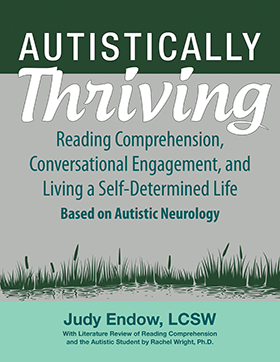The title of this blog is the title of my newest book that is now printed and those who have preordered have started receiving their copies. In a matter of days, all who have ordered should have the book in their hands!
This is the most substantial book I have written to date and it is also the first time I have self published a book. Initially, it was daunting to learn all the details and steps in the process and to hire various people for layout, proofreading and graphic design. Ultimately, I did it! If you see any mistakes in my book please do let me know so that it can be corrected before future printings. That being said I want to tell you there is already one HUGE mistake. A whole section called Advanced Praise has gone missing.
Here is what happened.
In the process of making a book the manuscript goes back and forth between people who have various functions and the author. Initially, I had several months of back and forth with Susan, my layout person as corrections were made, text rearranged and other sections such as advanced praise, index, appendix, and references were inserted. Once it looked good to us it went to the proofreader I hired. I needed to decide which proofreading suggestions to accept and which to decline as I was given a multitude of choices, depending on how formal I wanted the text to read. (I went informal professional as I want it readable to John Q. Public as that is the most of the people in the world.)
One of the many corrections I accepted was to put the beginning pages of the book with Roman Numerals (APA Style) and to start the text with numbered pages. It took me several weeks to indicate and follow up with layout on the proofreading suggestions I wanted to accept. Then, a new stage in the book making process was reached. There was no more content change – I simply looked at how the text appeared on each page – margins, headers, subheaders, indents, bold, italics, etc., etc., etc,. This back and forth went on for another month.
And this is where the most unfortunate mistake happened. The section in front of the book called Advanced Praise that was to have no page numbers did not get inserted. And nobody noticed until today when I opened my copy so I could get a list of contributors I wanted to send thank you notes. I discovered the whole section is not there!
It is entirely my fault. When I went with the proofreading recommendation to start with Roman numerals on Table of Contents and the numbers beginning with the first chapter I said nothing about inserting the Advanced Praise section without either style of page numbers in the very front of the book. And even though the final layout that went back and forth for a month or more had this section dropped I never noticed. At this point I was no longer reading for content, but simply looking at pages and comparing all the details of margins, headers, subheaders, indents, bold, italics, etc.for congruency throughout the nearly 300 page book.
I feel awful. I give a HUGE apology to all the 16 people who took the time to read the manuscript and write some advanced praise for my book. I told them that some of the advanced praise would go on the back cover and the rest would go inside the front cover. For some, it would be the first time their name was included in a published book. Even though I can include this section in future printings there is nothing I can do about the fact that it is absent from the first printing. Here is the missing section. If you know any of the wonderful people who contributed please give them a special thank you. I surely do thank each and every one of them.
Advanced Praise Section that inadvertently got dropped from the first printing of Autistically Thriving: Reading Comprehension, Conversational Engagement and Living a Self-Determined Life Based on Autistic Neurology:
Endow’s book does an extraordinary job of explaining how the autistic brain thinks and feels and does so without pathologizing autism. Professionals, educators, and families will find the book full of insightful explanations and demonstrative stories that demonstrate how an autistic person processes sensory input and understands information. This clarity allows the reader to then use Endow’s excellent strategies to support effective engagement in classrooms, at home, and in the community while still honoring neurodiversity and valuing the autistic way of being.
– Zosia Zaks, M.Ed., C.R.C., Manager of Education and Programming at Towson University’s Hussman Center for Adults with Autism
“““““““““““““““““““`
Judy Endow’s new book Autistically Thriving, Reading Comprehension, Conversational Engagement and Living a Self-Determined Life Based on Autistic Neurology is a game-changing book! Judy addresses the complex issue of living as a neurominority in a neuromajority world. Most books focused on helping autistic people are written by neurotypicals. This book has a deeper understanding into what is happening in the autistic brain because of Judy’s own neurology. Judy has developed practical strategies on how to improve flexibility in thinking, retrieval of information, reading comprehension and navigating complex social interactions. This book details common dilemmas for autistic people such as obsessive thought loops and gives the reader novel ways of changing those thought patterns. Judy’s book is written with clarity and insight. I’m especially impressed with some of the theories Judy has developed that she shares throughout her book. If I had one book on autism to recommend to parents, teachers, therapists and autistic people themselves it would be this one.
– Debra Muzikar, Author of The Art of Autism: Shifting Perceptions.
““““““““““““““““““““““
Some books expand your perspective, others add depth to your professional practice. Autistically Thriving does both, and does so with insight, wisdom, and humor. While the value of a neurodiversity approach is well understood, many organizations have struggled with how to put it into practice. Judy Endow’s own experience has provided not only the reason why this understanding is necessary when working with autistic individuals but also the tools to start implementing this approach.
– CJ Webster, LMFT, Executive Director, Common Threads Family Resource Center
“““““““““““““““““““`
Autistically Thrivingis an excellent resource that will be of benefit to autistic people, their families and partners and those working with them. The book is a comprehensive survey of autistic experience drawn from the author’s extensive knowledge and observation of her own life. It offers a thorough understanding of autism from an autistic perspective. I highly recommend this book.
– Yenn (formerly Jeanette) Purkis, Autistic author, advocate and presenter
“““““““““““““““““““`
Judy Endow is the ultimate expert – both walking the walk of autism and a professional who helps teachers and families understand the neurology of autistic children and adults and how to help them. She explains how autistics gather, process, store and retrieve information, and how their executive and other brain functions work, using non-medical language and many examples. She explains in detail how to provide the supports that allow autistics to develop into their best selves. There is always a neurological explanation when a person with autism doesn’t act as expected, and this book will help you figure it out and learn what to do to help. What a joy to have it all in one book! It is going to become required reading for the psychologists I supervise.
– Sandra McClennen, Ph.D., Psychologist
“““““““““““““““““““`
Autistically Thriving is an essential resource in understanding students with autism. Judy Endow blends current research, professional practice and personal experiences for a comprehensive look at the autistic neurology. This combination provides clarity for professionals and family members who strive to truly understand the students with autism in their lives.
– Brenda Vicen, MS/CCC-SLP, Speech-Language Pathologist and Assistant Director of School Services, Common Threads Family Resource Center
“““““““““““““““““““`
‘To be autistic or not to be autistic’, is not the question in this book. One is either autistic or not autistic. This is a world that changes moment by moment. ‘To cope or not to cope’, is not a question in this book either. In order to be a part of here and now one must teach oneself to co exist.
The book draws the reader into its magical depths right from the beginning when we see how the narrator, as a child created one big picture from the words she heard, added more to the same picture, until she got a different way to escape this piling sensory confusion – she practiced creating pictures ‘in layers’ so that she could edit them if necessary. The world of words and pictures is a fluid world where flowing is the part of accommodation, art of explaining the chaos.
If one does not have a process to catalogue the magnified or minimized sensory jargon then according to the book – “it can feel being inside one of those mirror-distortion houses at carnivals.” Very well explained!
As a speaking autistic woman, whose writing is so fluid, she finds her speech is not sufficiently fluid to summon them at her will. This could be difficult to talk those ‘small talks’ that meander like streams without purpose in a social system.
The book includes brilliant poems and my favorites are – ‘Paper Words’ (where she ‘speaks up ink’ and ‘listen people to the ink’) and ‘Getting Out of Town’.
The book explains how some information can be amplified, some become unnoticed and some become distorted while they get selected to be processed. Their processing can be linear, non discriminatory with an out of control selection of a sensory event or totally be mono channeled.
The chapters have sub headings which create an easy finding of topics. The care taken in writing this book, the un-puzzling of a picture called autism, the philosophical pondering in the sections – ‘Is autism a disability of difference’, ‘When autism is a “Difference” and ‘When Autism is a “Disability”, makes us question how in the 21st century people with autism can include themselves in the fluid world of sensory and social flow.
The book is one of the best books on Autism where information and art meet to include each other from the beginning till the end.
⁃Tito Rajarshi Mukhopadhyay, Author of How Can I Talk if my Lips Don’t MoveandPlankton Dreams – What I learned in Special Ed
“““““““““““““““““““`
The audience for Judy Endow’s Autistically Thrivingis broad: autistic humans, their parents/families, teachers, friends, supporters, and want-to-be-allies. Judy enlightens the reader on autistic information handling (i.e. processing) and how it impacts learning and relationships. She challenges the reader to drop former limited ways of thinking about autism. It’s time to try on a new manner of being, one where the autistic processing style is respected and supported instead of confining autism to defined behaviors that are thought need to be fixed or controlled. Judy takes us through a leap of understanding that could lead to an entirely new frontier of collaborative supports and ease of relationships for people with autism. Anyone who has someone in their life with autism needs to read this book and take it to heart.
– Kate McGinnity, Autism author, consultant/coach, presenter
““““““““““““““““““““““
Autistically Thriving: Reading Comprehension, Conversational Engagement and Living a Self-Determined Life Based on Autistic Neurology helps the reader to develop a greater understanding of the autistic neurology. Judy weaves research, practice and personal perspective in a way that prompts the reader to reflect on the way they teach, converse and understand the perspective of others. This book takes the reader beyond autism, beyond disability and leads us to consider the “why” behind the actions of others. Judy is simply asking those of us with “typical” neurology to do what we ask those with different neurology to do every day, to understand and value the individual’s perspective and their humanity. This is a resource that every educator, parent and autistic should access!
– Lee Stickle, M.S.Ed., Director of TASN Autism and Tertiary Behavior Support and the School Mental Health Project.
““““““““““““““““““““““
Truly understanding the autistic neurology in a way that goes beyond the diagnostic criteria is essential for providing effective supports to those with autism. In her book, Judy expertly tells the story of autistic people using a wealth of personal experiences and client examples along the way. Even if you think you understand autism, reading this book will provide a more empowered view and a deeper comprehension of the autistic experience. I highly recommend it for anyone touched by autism.
– Kirsten Cooper, MSW, Executive Director of the Autism Society of Wisconsin
““““““““““““““““““““““
Autistically Thriving: Reading comprehension, conversational engagement and living a self-determined lifeby Judy Endow offers an amazing wealth of information, ideas and concepts that will support any parent or teacher in their effort to understand and plan for autistic neurology. In this evolving era of Developmental Neuroscience, it is essential for caregivers to listen closely to folks on the spectrum. The gifted few who are able to articulate how they experience the social world, and how they learned to survive in neurotypical society, have unimaginable stories to tell. In her latest book, Judy Endow has joined the likes of Temple Grandin and Donna Williams, as an ambassador for autistic thinkers. She has written a highly accessible book, sharing not only her own experiences of social memory, reading comprehension and regulating emotions, but also of others along with her solutions. I will read and re-read this book. I will hand it to teachers and quote from it at IEP meetings. Bravo Judy!
– Kari Dunn Buron, Autism Education Specialist, Teacher, Author
““““““““““““““““““““““
Autistically Thrivingis a MUST READ! Judy Endow gives us an insight into the autistic neurology- providing us with a perspective on how to presume competence and support individuals in a new light. “In reality high-functioning and low-functioning are not real labels, having no definition, no skill set lists, and no diagnostic criteria. Yet these words are often used to determine opportunities that will be denied or extended to an autistic and in assigning the correct amount of personal responsibility and blame to an autistic for the way his autism plays out in everyday life.” YES, YES, YES!
– Lisa Ladson, Educational and Behavioral Consultant Co-Author of Lights! Camera! Autism! Using videotechnology to enhance lives and Lights! Camera! Autism! 2: Using video technology to support new behavior.
““““““““““““““““““““““
Too often, when professionals speak about autism spectrum disorders, the talk is started with a laundry list of characteristics, challenges and deficits. I am guilty of this too. These are all provided from the perspective of the clinician or based on the understanding of other professionals. It often looks more like the DSM descriptions without true understanding how this impacts individuals who live with autism. In her book, Autistically Thriving, Judy Endow invites us to learn about the characteristics and the impact of these characteristics based on information from those who live with ASD. She provides us insight into the neurology that impacts sensory processing, reading, processing and overall life. She then provides helpful recommendations on how to address the realities for those who live on the spectrum. The book is comprehensive and provides meaningful insight and recommendations that can be used in a range of settings. I have long admired Judy Endow for her honesty and willingness to pull back the curtain on ASD. This book excels in doing this.
– Cathy Pratt, Ph.D., BCBA-D, Director, Indiana Resource Center for Autism
“““““““““““““““““““““““““““““““`
“Judy Endow, MSW, LCSW has DONE IT AGAIN! Autistically Thriving is a must-read for anyone working with individuals with Autism. Read this book and then read it again! What a gift it is to learn from one of the best!”
– Ellen Eggen, MS, LPC, ATR-BC, Director of Mental Health Services at Common Threads Family Resource Center.
“““““““““““““““““““`
Autistically Thriving, Judy Endow applies what we know about autism and learning to real life examples to help us further understand the neurology of autism. Useful strategies of the “Why didn’t I think of that?” variety are included that will serve to bridge and improve our relationships with those on the spectrum. Judy’s unique perspective and ability to provide a wealth of content in a concise passage will make this book an ongoing resource, anticipated to be reread often. Thank you Judy, for continuing to share your valuable insights that serve to make us better teachers.
– Julie Arens, M.S.Ed, Autism and Behavior Support Teacher/Diagnostician
““““““““““““““““““““““
Your book helped me understand autistic neurology. I now realize how little I understood. Until reading this book, I feel I have not in any way fully understand or appreciated autistic neurology and how to maximize the potential of autism people. Your book brought this to light with practical, easy to use strategies. You broadened my understanding!
– Debbie Irish, Chair, Canadian Autism Spectrum Disorder Alliance

BOOKS BY JUDY ENDOW
Endow, J. (2019). Autistically Thriving: Reading Comprehension, Conversational Engagement, and Living a Self-Determined Life Based on Autistic Neurology. Lancaster, PA: Judy Endow.
Endow, J. (2012). Learning the Hidden Curriculum: The Odyssey of One Autistic Adult. Shawnee Mission, KS: AAPC Publishing.
Endow, J. (2006). Making Lemonade: Hints for Autism’s Helpers. Cambridge, WI: CBR Press.
Endow, J. (2013). Painted Words: Aspects of Autism Translated. Cambridge, WI: CBR Press.
Endow, J. (2009). Paper Words: Discovering and Living With My Autism. Shawnee Mission, KS: AAPC Publishing.
Endow, J. (2009). Outsmarting Explosive Behavior: A Visual System of Support and Intervention for Individuals With Autism Spectrum Disorders. Shawnee Mission, KS: AAPC Publishing.
Endow, J. (2010). Practical Solutions for Stabilizing Students With Classic Autism to Be Ready to Learn: Getting to Go. Shawnee Mission, KS: AAPC Publishing.
Myles, B. S., Endow, J., & Mayfield, M. (2013). The Hidden Curriculum of Getting and Keeping a Job: Navigating the Social Landscape of Employment. Shawnee Mission, KS: AAPC Publishing.




